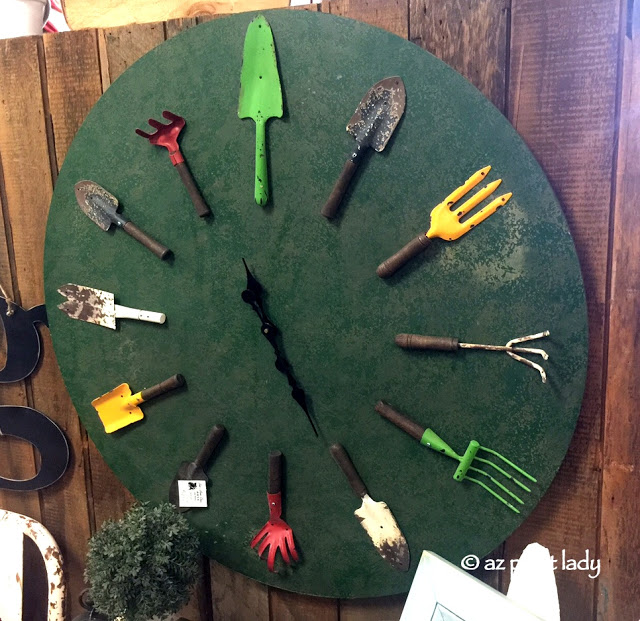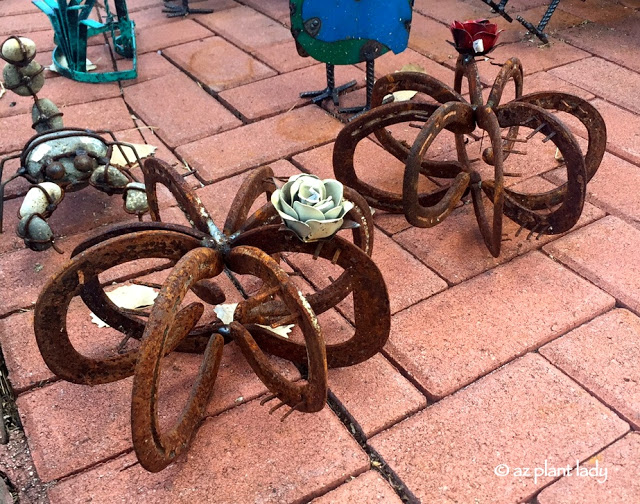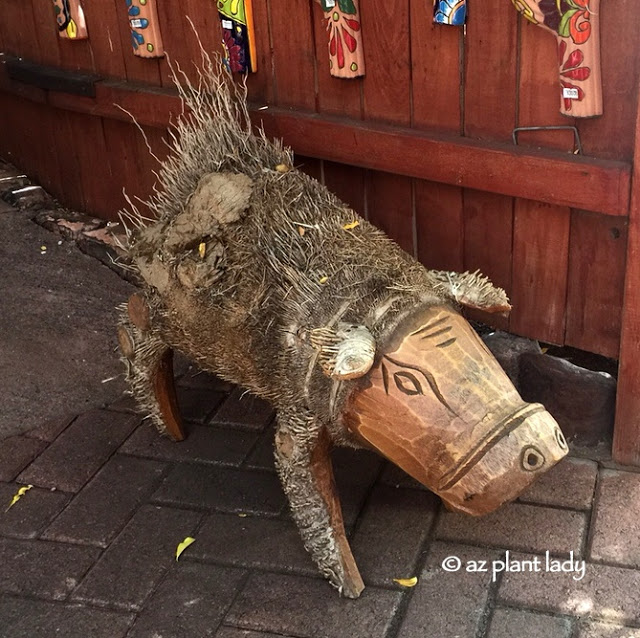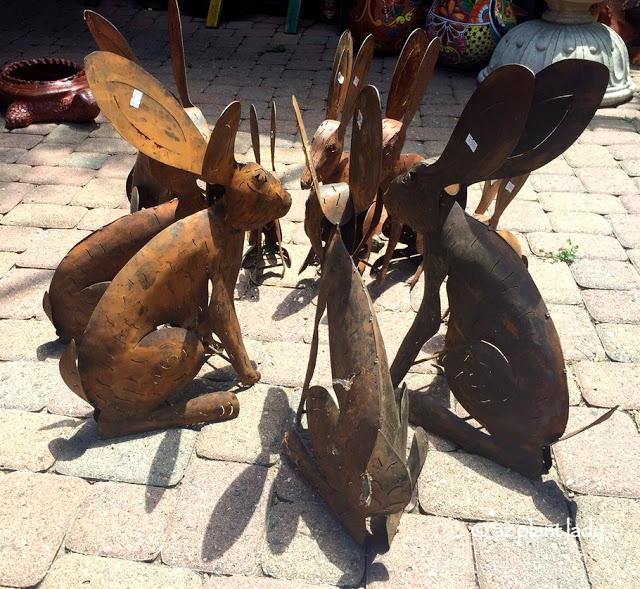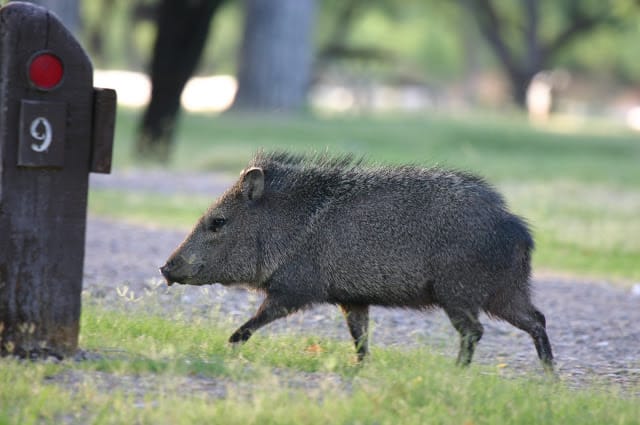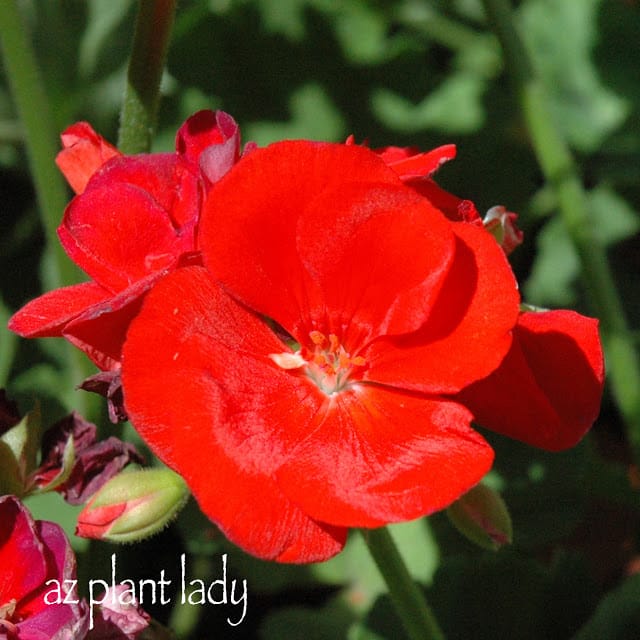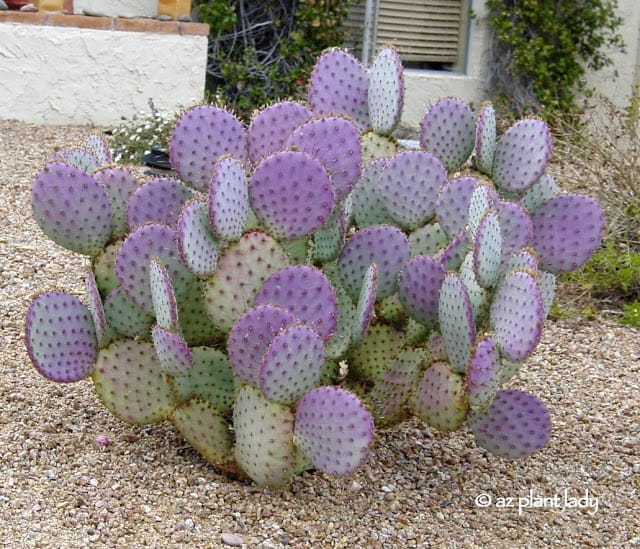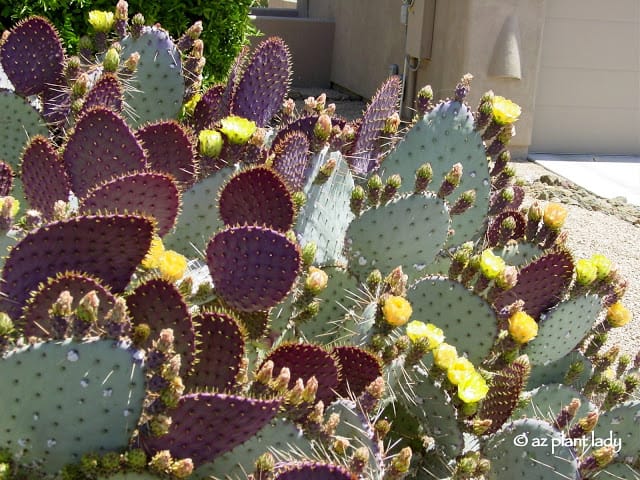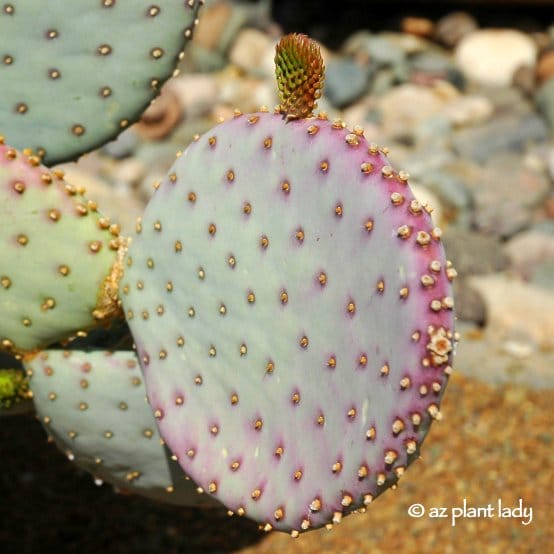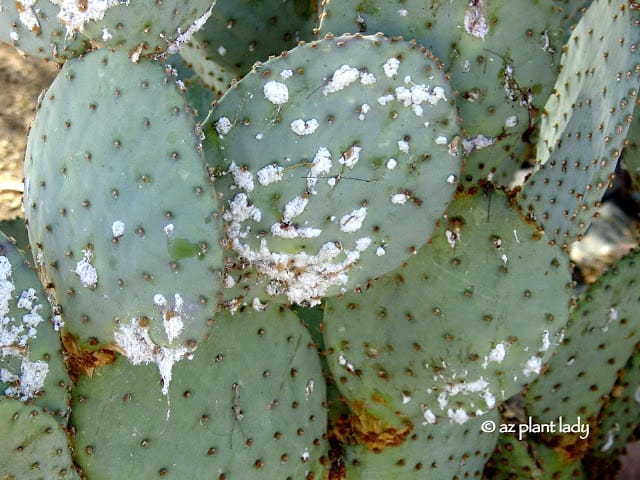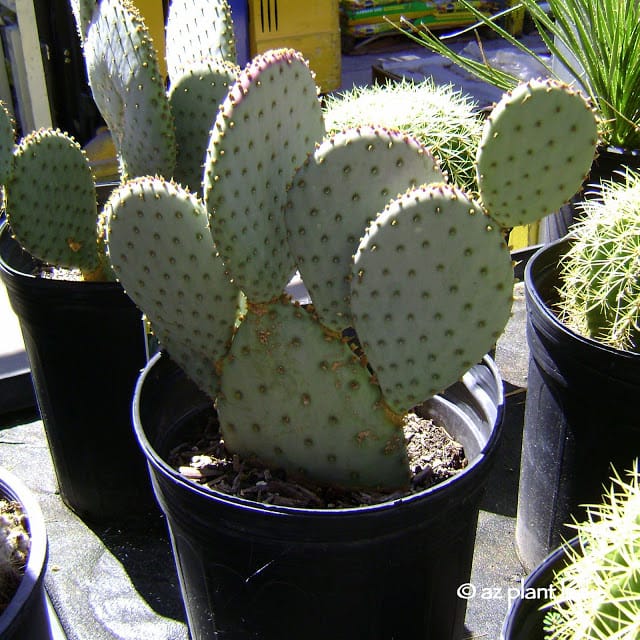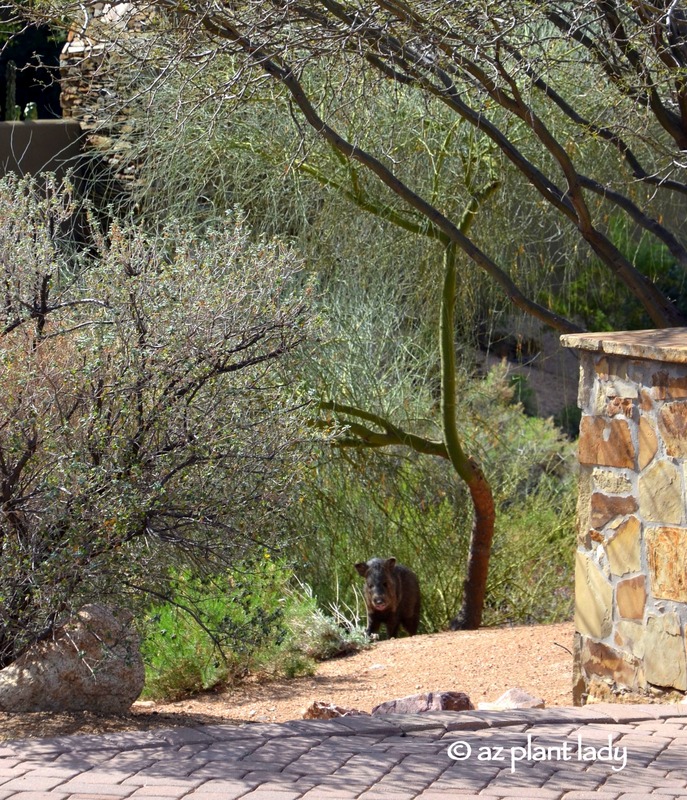
Javelina stepping out of an arroyo
Unwanted Guests: Dealing with Javelina in Your Desert Garden
Yesterday, I had a rather unexpected encounter with a javelina while taking pictures of a landscape. I think he was as surprised as I was to see him and he retreated back to his arroyo after a couple of minutes. That meeting inspired me to write this post and how they affect the desert garden – primarily what types of plants they like to eat.
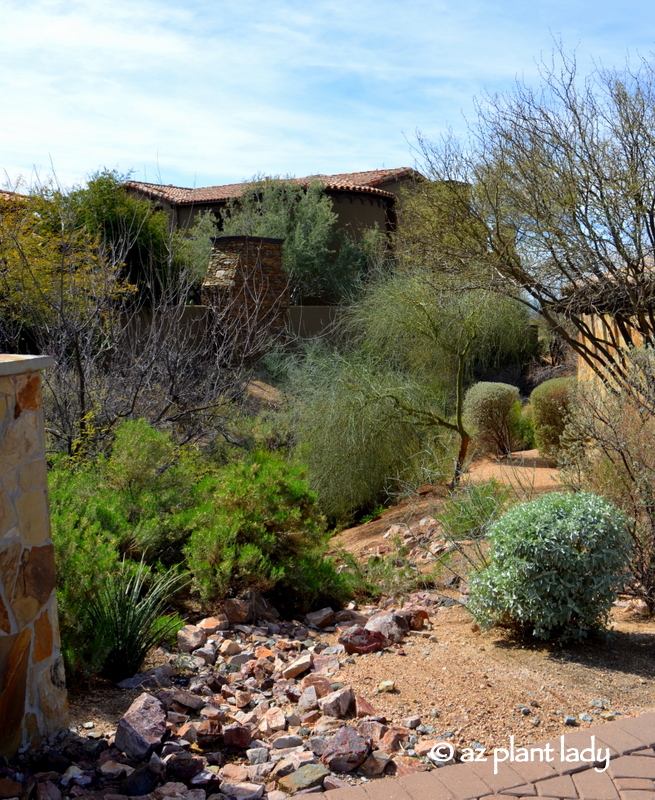
Javelina travel through arroyos (washes)
Javelina: The Surprising and Destructive Garden Visitors
To state that I was surprised to come so close to a javelina is an understatement. In the over twenty years that I’ve worked in desert gardens, I seldom see these pig-like mammals as they usually sleep through the day underneath mesquite or other desert trees.
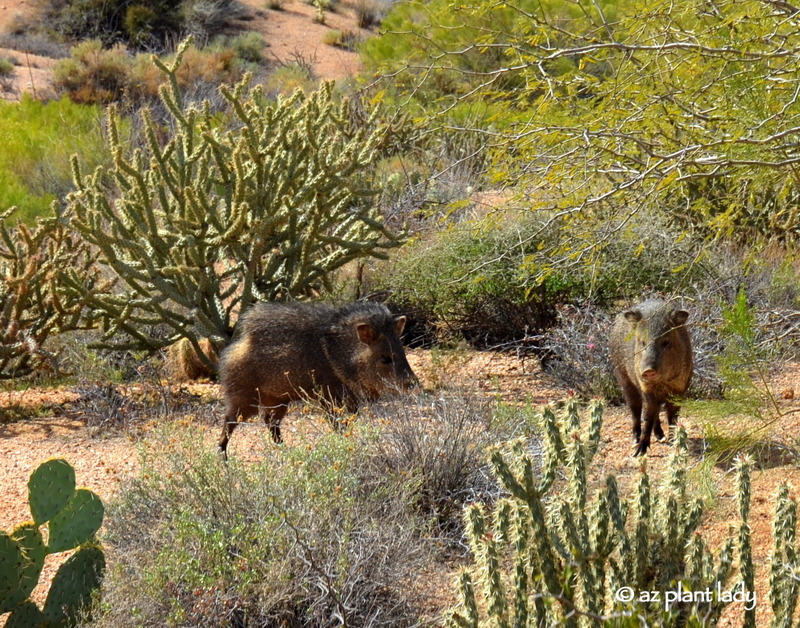
Understanding Javelina and Their Habits
Often referred to as ‘wild pigs’ due to their resemblance to a boar, they aren’t pigs, but are a peccary, which is a medium-sized mammal with hooves. Javelina are found throughout the Southwest, but their range also extends to Central and South America. In urban settings, you’ll find them in more naturalized areas.
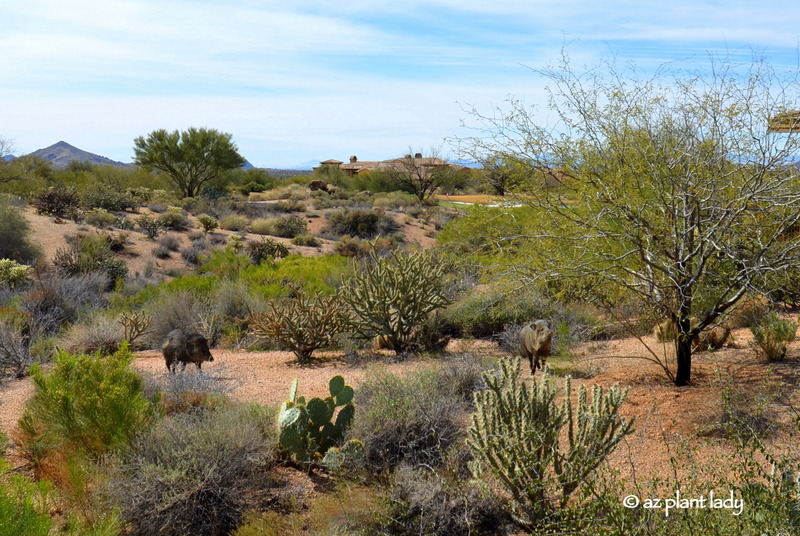
Plants Javelina Love and Those They Leave Alone
They frequently travel in herds, although I only saw these two adults on this day. While it can be enjoyable to view them from afar (don’t get too close as they can be dangerous), dealing with the damage that they cause to gardens isn’t fun.
Javelina’s Dietary Preferences
Javelina love to eat the pretty things we plant in our desert landscapes such as flowering annuals, and they don’t stop there. The spines on your prized cactus won’t deter a hungry little animal – they go right in and munch on the base of a prized columnar cactus as well as the pads of prickly pear cactus.
When surveying the damage that they cause to the garden, what makes it worse, is that the pig-like critters frequently don’t eat what they dig up.
1. Petunias and flowering annuals are delicious

My relationship with these wild animals is a long one. It began by working to keep them away from the thirty-six tee boxes that I had to plant with flowering annuals seasonally on a golf course. Not surprisingly, they were drawn to these colorful petunia and annual islands and would dislodge the plants by rooting them up with their snouts before eating them.
My crew and I had some mixed success with spraying squirrel repellent every few days on the petunias, but it was a lot of work and not foolproof.
2. Soft leaved plants are Javelina candy
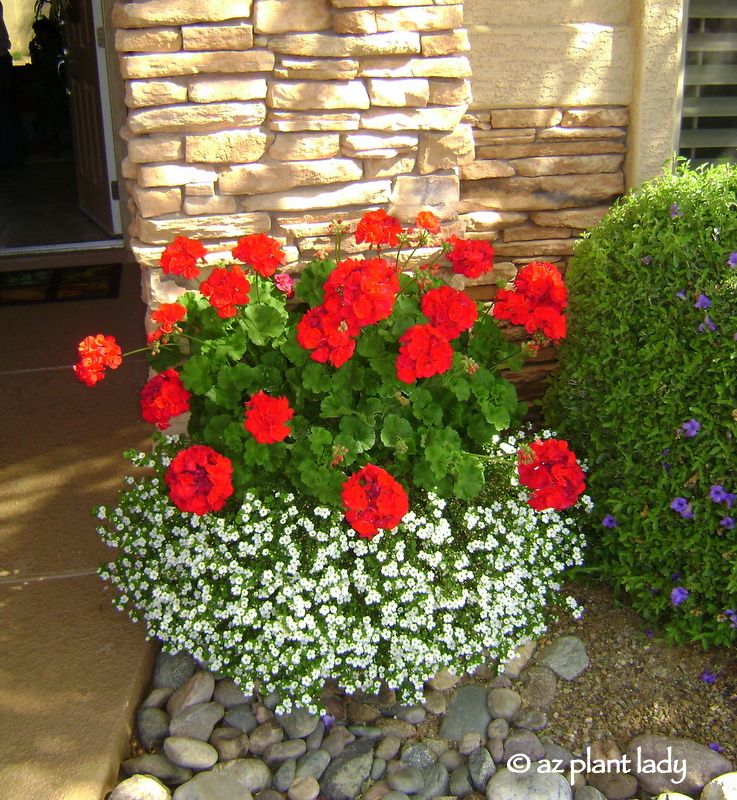
Javelina will zero in on popular potted annuals such as pansies, petunias, snapdragons, which are like candy to them. While geraniums aren’t their favorite potted flower, they will eat them too if hungry enough. They prefer soft leaved plants.
If you want pretty containers filled with flowers and live in a neighborhood where javelina are present, you’ll need to place the pots in an enclosed area or courtyard where they can’t reach.
3. Citrus and seed pods attract the desert peccary
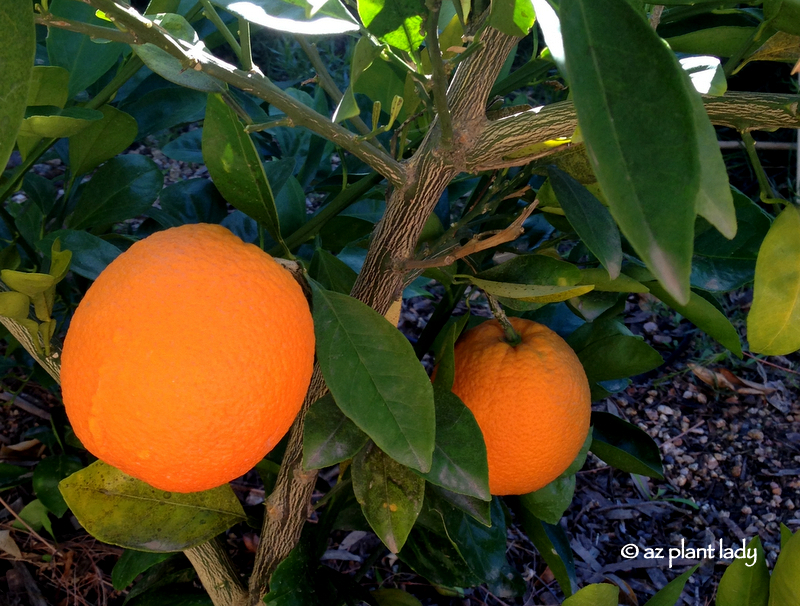
Depending on the time of year, a javelina’s diet changes, based on what is available. In winter, citrus they will grab citrus fruit off of the tree.

In summer, mesquite seedpods are one of their favorite foods.
4. Cactus of all kinds feed the peccary
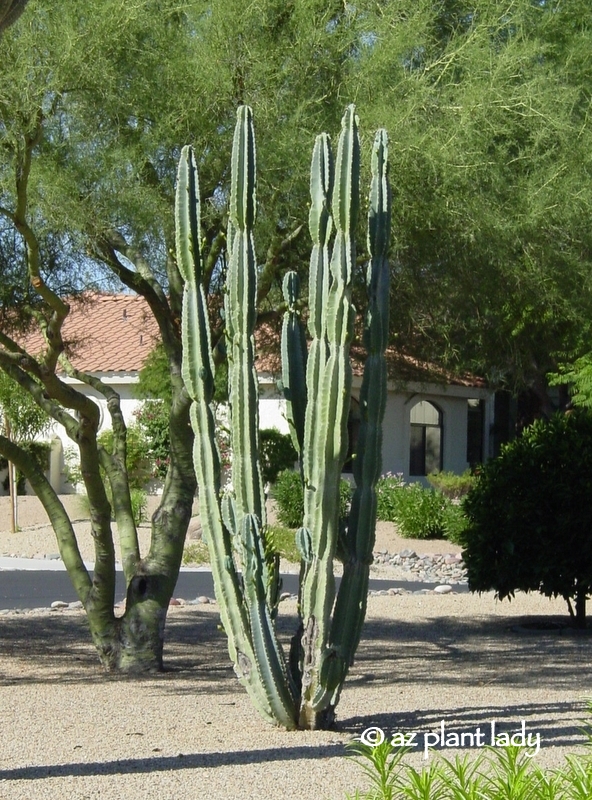
A Cereus peruvianus cactus that has some bites taken out of its base by javelina.
A fairly common sight is a columnar cactus with some bites taken out of its base. This can happen where packs of the animals are present. In most cases, the damage is largely cosmetic and the cactus will be fine. However, to prevent further damage, you can surround the base of the cactus with a wire mesh cage.
Prickly pear cactus is another plant which is devastated by the cactus loving desert dweller.
There are Few Javelina-Resistant Plants
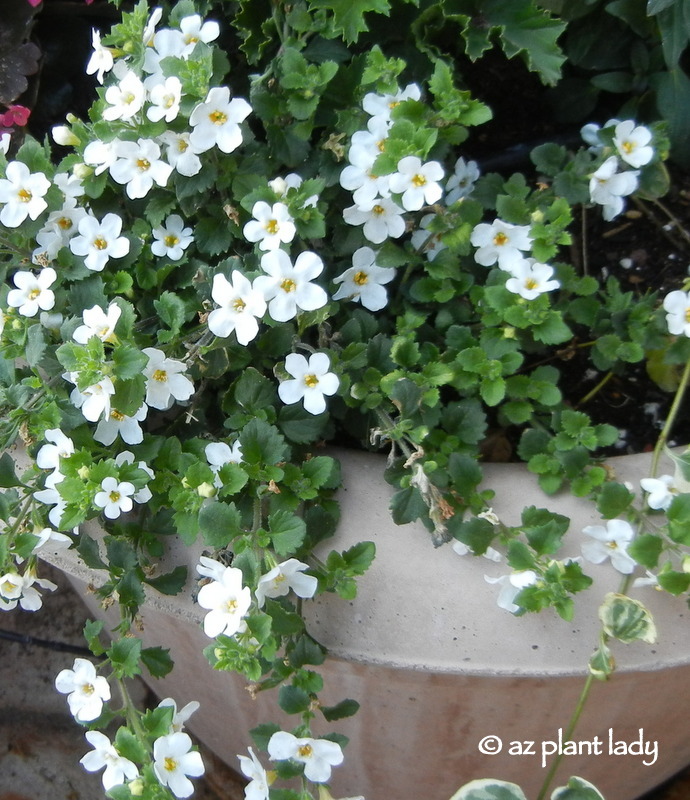
Bacopa
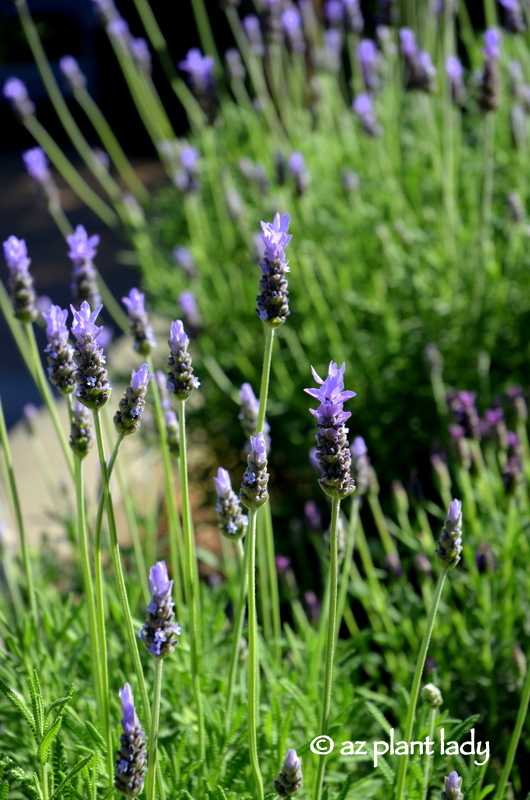
Lavender
There are some flowering plants that they usually stay away from. These include Bacopa and Lavender, which can be used in containers.

Protecting Your Garden: Tips for Javelina-Resistant Plants and Fencing
While there is no guarantee that these animals won’t eat the plants in your desert garden from time to time. There are some plants that are less palatable to them than others. Here a helpful link for javelina resistant plants. I must tell you that if a a wild animal is hungry enough, it will eat the plants on this list – I know this from personal experience.
The only foolproof way to keep them away from eating your plants is to keep them out with a fence or wall.
Share Your Experiences: Plants They Eat and Plants They Ignore
Do you have javelina where you live? What type of plants do you notice them eating? Any plants that they seem to leave alone?


